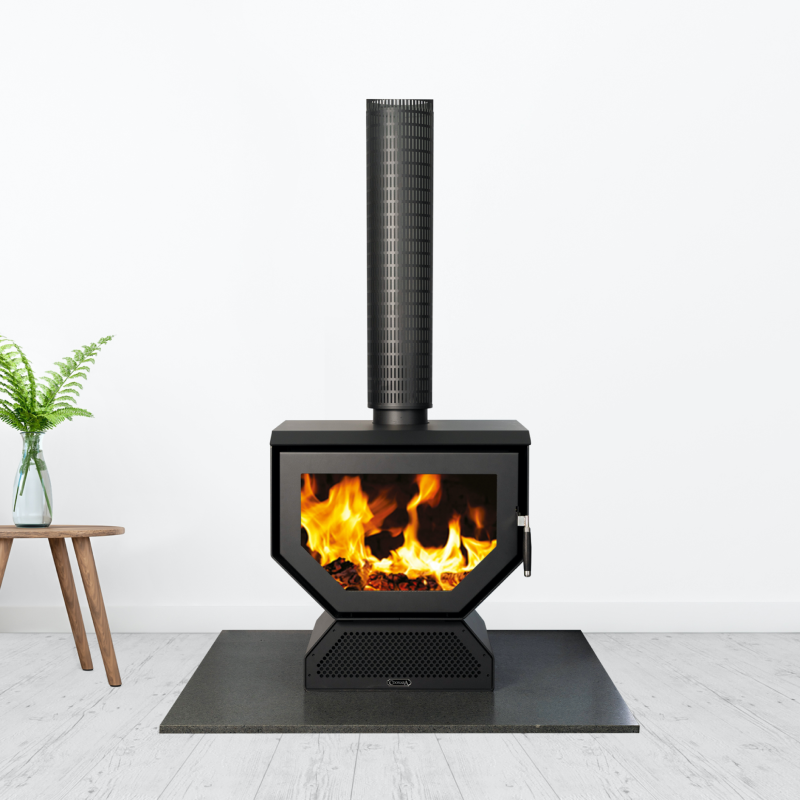With the winter nights getting colder, the idea of keeping your wood burning stove lit all night to maintain warmth can be tempting. But is it safe to leave your wood burning stove on overnight? And if so, how can you ensure it keeps burning efficiently? This informative piece from Coonara, an expert in wood burning stoves, has all the answers you need.
Understanding Your Wood Burner
Wood burning stoves are efficient, eco-friendly, and provide a unique and comforting warmth. They work by burning wood fuel and coal in a closed chamber, with air intake controlled by vents. The type of wood you burn, how you place the logs, and how you manage the air vents are all crucial to keep your fire burning efficiently.
Keep Your Fire Burning Overnight: Yes or No?
Generally speaking, it's safe to leave your wood burning stove on overnight, as long as you take the necessary steps to ensure it is properly maintained and monitored. That said, there's always a risk of a chimney fire, so common sense with your wood burner is important. Keeping the stove burning all night requires careful preparation and attention to safety.
Steps to Safely Keep Your Wood Fire Burning All Night: Firewood, Air Vents and More!
1. Check Your Wood: Using the right type of firewood in your wood heater is essential. Hardwoods, like red gum, burn longer and provide more heat. Ensure that the wood is dry; you can use a moisture meter for this. Wet or 'green' wood will create a lot of smoke and can deposit creosote in your chimney, which could potentially catch fire. Green wood is also hard to get going when starting your fire and can be a challenge if you want to keep your wood stove burning all night. So if you want to keep a fire burning throughout the night, ensure that your wood isn't green and that you have chosen older, dry wood to burn - stay away from the wet stuff! That way, you won't be calling the chimney sweep every six months to clean your flue.
2. Prep Your Wood Burner: First, clean out any ash from the bottom of the wood burner. Then add some small pieces of wood or kindling towards the back. Once you get your fire started, add a large log at the front of the stove. This 'back-to-front' method allows the larger logs towards the back to catch fire slowly, providing a slow burning fire that lasts until the morning. Remember: a well-prepared fire will burn all night.
3. Regulate the Air Intake: Once the fire is burning well, you can close the air inlet to slow down combustion. However, don’t shut off the air vents completely but close them so that there's just enough air that gets in to keep the fire alive. Many wood burners automatically leave a small amount of airflow even when you close the controller completely.
4. Final Checks: Make sure there isn’t anything flammable around your wood burner. Check that your smoke alarms and carbon monoxide detectors are working. And be sure to check that the door on your wood burning stove is securely closed.
Remember, if your stove is left to burn out overnight, the remaining embers can still stay hot enough to rekindle a fire. So, take care when refuelling the fire in the morning.
Regular Maintenance For a Safe Wood Burning Stove
To ensure safety and efficient operation of your wood burner, regular maintenance is essential. Your chimney should be swept at least once a year to remove any buildup of soot or creosote. Regularly check the stove and the flue system for any damage and get them repaired promptly.
Wrapping Up - and Staying Warm
While it's usually safe to leave your wood burning stove on overnight, it's always better to be safe than sorry. As long as you practise good fire safety and maintain your stove, you can enjoy the cosy warmth of a wood fire all night long.
Leaving a wood burning stove burning all night is a practise that requires awareness and understanding of the wood burner’s operation. But, with careful attention, the small hours can be as warm and cosy as the early evening, ensuring you have a comfortable and restful night.











